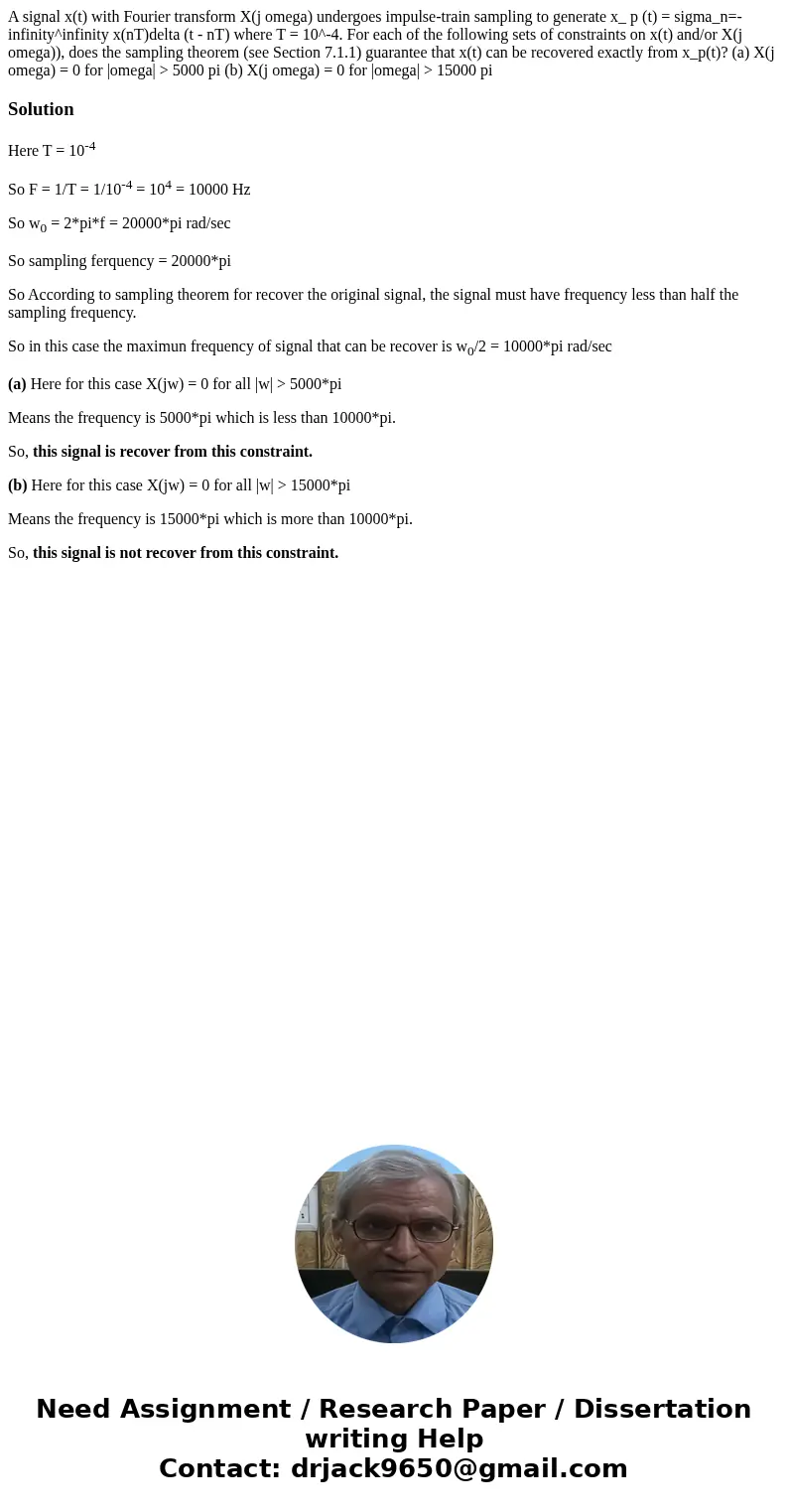A signal xt with Fourier transform Xj omega undergoes impuls
A signal x(t) with Fourier transform X(j omega) undergoes impulse-train sampling to generate x_ p (t) = sigma_n=-infinity^infinity x(nT)delta (t - nT) where T = 10^-4. For each of the following sets of constraints on x(t) and/or X(j omega)), does the sampling theorem (see Section 7.1.1) guarantee that x(t) can be recovered exactly from x_p(t)? (a) X(j omega) = 0 for |omega| > 5000 pi (b) X(j omega) = 0 for |omega| > 15000 pi
Solution
Here T = 10-4
So F = 1/T = 1/10-4 = 104 = 10000 Hz
So w0 = 2*pi*f = 20000*pi rad/sec
So sampling ferquency = 20000*pi
So According to sampling theorem for recover the original signal, the signal must have frequency less than half the sampling frequency.
So in this case the maximun frequency of signal that can be recover is w0/2 = 10000*pi rad/sec
(a) Here for this case X(jw) = 0 for all |w| > 5000*pi
Means the frequency is 5000*pi which is less than 10000*pi.
So, this signal is recover from this constraint.
(b) Here for this case X(jw) = 0 for all |w| > 15000*pi
Means the frequency is 15000*pi which is more than 10000*pi.
So, this signal is not recover from this constraint.

 Homework Sourse
Homework Sourse